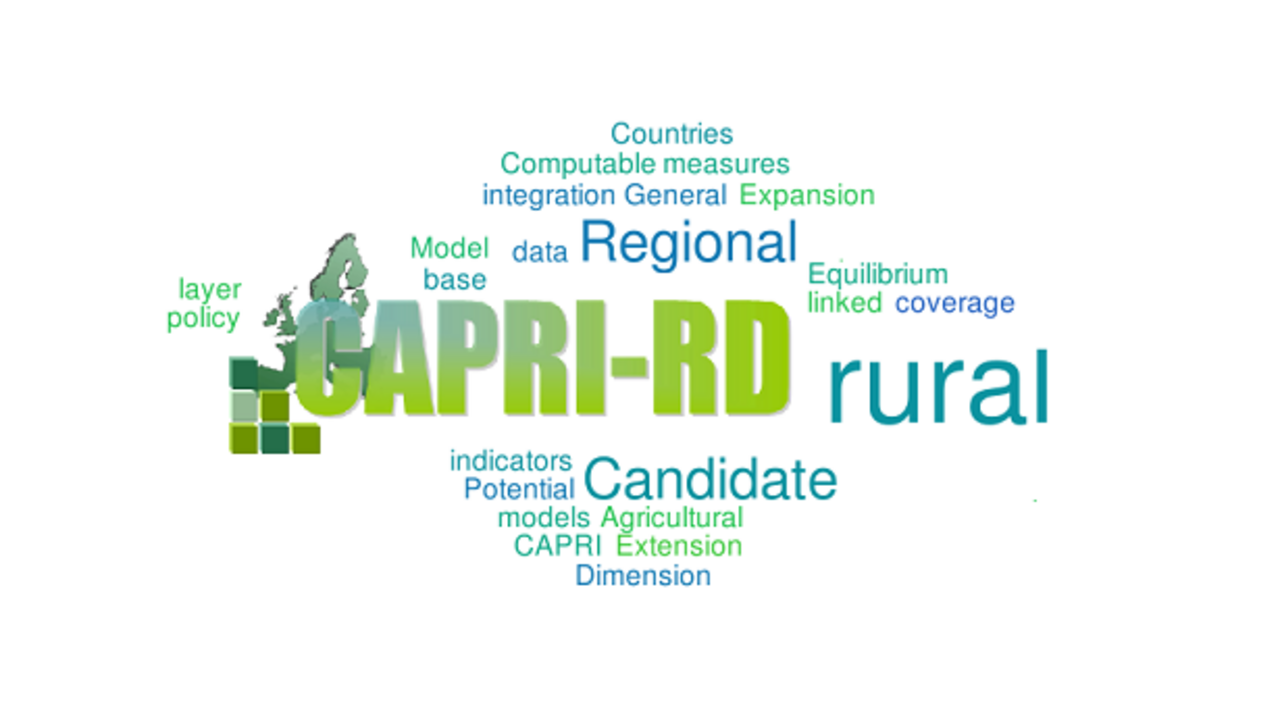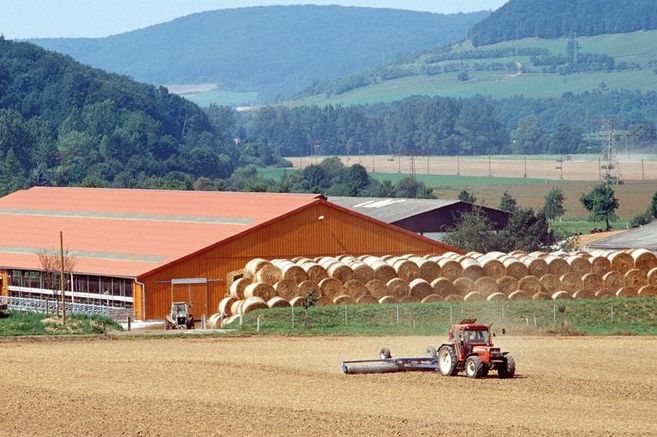Project
Common Agricultural Policy from the rural point of view: the CAPRI-RD model

CAPRI-RD Common Agricultural Policy Regionalised Impact - The Rural Development Dimension
Policy measures to promote rural areas like village renewal or promotion of young farmers do not only impact agricultural holdings but also other economic sectors, e.g. tourism, food processing or education. For responsible handling of tax payers’ money, it is important to know if the policy measure is adequately targeted. It is especially challenging to consider the interactions between the different economic sectors, merely because of the great number of different funding programs. The aim of this project is to solve this task and to quantify the impacts of promoting the rural areas.
Background and Objective
In Europe, the design of the policy for the agricultural and rural development, named "Common Agricultural Policy" (CAP), is jointly decided. The expenditures in 2013 were 57 Billion Euro, which is more than 40 percent of the total EU Budget. The CAP exists already since 1962 and was continuously adjusted since then. This included the implementation of a comprehensive catalogue of measures for promoting rural areas in the year 2000, also known as second Pillar of the CAP. The allocated budget for this was increased with the following agricultural reforms. Policy measures of the second Pillar are divers, in Germany in the last programming period for example, 26 different measures were offered. They differ from the conventional agricultural policy measures - like direct payments, price support or tariff protection – by affecting not only agricultural holdings but also other economic sectors in rural areas. The aim of the CAPRI-RD project is to make the modeling system "Common Agricultural Policy Regionalised Impact Modelling System" (CAPRI) fit for assessing these impacts and their interactions. In detail this means displaying the economic sectors in CAPRI through enhancing the model by regional equilibrium models, also known as Computable General Equilibrium (CGE) models.
Approach
To achieve the project target, the modeling system CAPRI was enhanced by the following aspects:
- Developing regional CGE models to display the agricultural and non-agricultural sectors;
- Developing and integrating a database of the second Pillar measures of the CAP and link this to the model;
- Development of indicators based on the "Common Monitoring and Evaluation Framework" (CMEF) for rural development.
In this Project, the group of Thünen-researchers worked in the field of model development and model adjustment, development of databases for rural development policy of the EU and the development of indicators. Another focus was the critical assessment of the model results through a comparison with results of the ex-post evaluation of rural development programs of the federal states of Germany.
Data and Methods
For the model enhancement with CGEs we used national "Social Accounting Matrices" (SAM) and aggregated regional databases for different aspects (statistics on employment, gross domestic products of the different sectors, agricultural statistics and regional "Input-Output"-tables). When they were not observed at regional level, we estimated them using appropriate methods (Ferrari et al., 2010; Kuhar et al., 2009). We built a regionally differentiated pan-European database on payments for policy measures promoting rural development. This is used to display the data distribution and to simulate policy changes. To validate the model, we carried out a simulation with the developed CAPRI-RD model and compared the results with the ex-post evaluation reports of Germany for the programming period 2000 until 2006 and with results from an extensive literature review. Additionally, we conducted expert interviews.
Our Research Questions
- Are the results of the „enhanced“ CAPRI model regarding the impact of second Pillar payments confirmed by the evaluation reports for Germany for the programming period 2000 until 2006 and by the literature?
- Is it possible to link regional CGE models with the mathematical programming model CAPRI?
- Can CMEF indicators be implemented in the CAPRI-RD model?
Results
The project work showed that the integration of regional CGEs into to mathematical programming model CAPRI and the link with the developed database on second Pillar payments was successful. The Thünen-researchers found further that already with the current CAPRI model the data required to implement a big number of CMEF “baseline indicators” is available. For more indicators the required data sources were identified. The validation of the model results regarding the impact of second Pillar funding for the example of Germany for the programming period 2000-2006 showed that the direction of the effects assumed in the model was confirmed by the literature and the evaluation experts in this field. Also that the impact of the second Pillar funding on the economic development of rural areas is rather small. We found further that the modeling of individual measures can be improved. A significant difference of the results gained with CAPRI-RD is that the model can quantify the joint effect of the whole economy and policy measures, even if contrary effects exist. For example, the model results show that due to the second Pillar payments, the GHG emissions and nutrient surpluses per ha slightly decreased and the land use increased. These two effects were confirmed by the evaluation experts and other studies, although they did not conclude that this leads to an overall negative environmental impact.
Thünen-Contact

Involved external Thünen-Partners
- Joint Research Centre (JRC)
(Brüssel, Belgien) - University of Gloucestershire
(Gloucestershire, Großbritannien (inkl. Nordirland)) - Institute for European Environmental Policy, (IEEP)
(London, Großbritannien (inkl. Nordirland)) -
Rheinische Friedrich-Wilhelms-Universität Bonn
(Bonn, Deutschland) - Wageningen University & Research (WUR)
(Wageningen, Niederlande) -
Middle East Technical University (METU)
(Ankara, Türkei) -
University of Helsinki [FI]
(Helsinki, Finnland) - University of Ljubljana
(Ljubljana, Slowenien)
Funding Body
-
European Union (EU)
(international, öffentlich)
Duration
4.2009 - 4.2013
More Information
Project funding number: 226195
Funding program: EU – FP7 – Thematic Priority "Food, Agriculture and Fisheries, and Biotechnology"
Project status:
finished



![[Translate to English:] Logo des Bundesministerium für Ernährung und Landwirtschaft](/media/allgemein/logos/BMEL_Logo.svg)